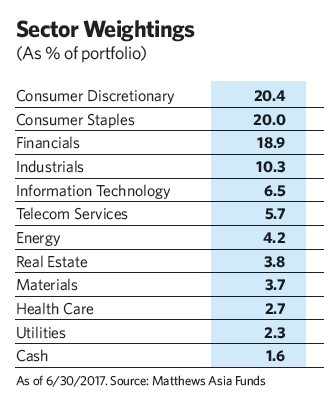 Historically, investors have sought out Asian stocks for their growth potential and largely ignored their dividends. Yet Asian stock dividends accounted for two-thirds of the total return of the MSCI AC Asia Pacific ex Japan Index between 2005 and the beginning of 2016, according to one study. If the contribution made by reinvesting dividends were excluded, the cumulative return over the period would have been only 25%, where it was 71% if the dividends were included.
Historically, investors have sought out Asian stocks for their growth potential and largely ignored their dividends. Yet Asian stock dividends accounted for two-thirds of the total return of the MSCI AC Asia Pacific ex Japan Index between 2005 and the beginning of 2016, according to one study. If the contribution made by reinvesting dividends were excluded, the cumulative return over the period would have been only 25%, where it was 71% if the dividends were included.
 The notion that Asian companies scrimp on dividends or don’t pay them at all is quickly falling by the wayside, according to Yu Zhang, who manages the Matthews Asia Dividend Fund with Robert Horrocks and a team of three analysts and one co-manager. “Asian companies are a meaningful dividend player on the global stage alongside developed markets,” he says. “Corporate governance practices have been improving in Asia over the last few years, and an increasing emphasis on shareholder returns via dividend increases reflects that.”
The notion that Asian companies scrimp on dividends or don’t pay them at all is quickly falling by the wayside, according to Yu Zhang, who manages the Matthews Asia Dividend Fund with Robert Horrocks and a team of three analysts and one co-manager. “Asian companies are a meaningful dividend player on the global stage alongside developed markets,” he says. “Corporate governance practices have been improving in Asia over the last few years, and an increasing emphasis on shareholder returns via dividend increases reflects that.”
The favorable dividend policies are also a reflection of the business ownership structures in Asia. Many companies are family-owned concerns in which the original founders continue to retain controlling stakes, and many wish to extract corporate cash flow through dividends. The prevalence of family-owned businesses in the region is one reason more than 40% of the Matthews fund is in mid- and small-cap stocks, which aren’t a typical space for dividends in the U.S.
“Dividends align the interests of minority and majority shareholders quite well,” says Zhang. “Everyone is getting paid equally according to how much they own in a company.” Dividends are also important to state-owned enterprises in countries such as China, he adds, since they provide an important source of government funding.
Investors have a number of reasons to consider adding dividend-paying stocks to the mix. Like their U.S. counterparts, Asia’s dividend payers typically exhibit lower volatility than other stocks and volatility is many Asian markets can surge out of nowhere. Asian dividend payers also add an element of diversification to portfolios. Dividend growth has been more robust in Asia than other parts of the world, and the region’s dividend-paying universe has expanded dramatically over the last 15 years to include a broad set of countries and sectors.
 Asian stocks have a slight yield advantage over U.S. stocks. As of June 30, the Matthews fund’s benchmark MSCI AC Asia Pacific Index had a 2.40% dividend yield, while the S&P 500’s was only 2.02%.
Asian stocks have a slight yield advantage over U.S. stocks. As of June 30, the Matthews fund’s benchmark MSCI AC Asia Pacific Index had a 2.40% dividend yield, while the S&P 500’s was only 2.02%.
More important, says Zhang, Asian stocks also have better potential for long-term dividend growth for a number of reasons. From a short-term perspective, earnings growth among Asian companies has picked up since late 2016, reversing a three-year trend of deflation and earnings declines for many companies. Asian companies have weaned themselves from debt, and many are less leveraged than those in the United States. And of course, the broader Asia growth story and rise of the consumer class is still very much part of the investment picture.
Equity valuations among these companies are also more attractive than they are in the U.S., even after a slew of positive earnings surprises among Asian companies sent their stocks soaring at the beginning of the year. During the first six months of the year alone, the fund was up 19%.
The recent foray by investors back into Asian markets hasn’t pushed valuations to unattractive levels, says Zhang. In the U.S., markets have already built earnings expectations into stock prices and valuations are at historically high levels. By contrast, Asia’s markets “are trading around the midpoint of their historic valuations.” And many parts of Asia are in the earlier stages of economic recovery than the U.S. is, he says.
Tapping Asia’s Dividend Growth
September 2017
« Previous Article
| Next Article »
Login in order to post a comment








